Fresh herbs can transform a simple meal into something vibrant and flavorful. A sprinkle of parsley, a handful of cilantro, or a few leaves of basil can completely change a dish. But there’s one problem: herbs wilt quickly and often end up wasted at the back of the fridge.
The good news? With the right storage methods, you can keep herbs fresh for days—or even weeks. Here are simple, foolproof ways to extend the life of your herbs.
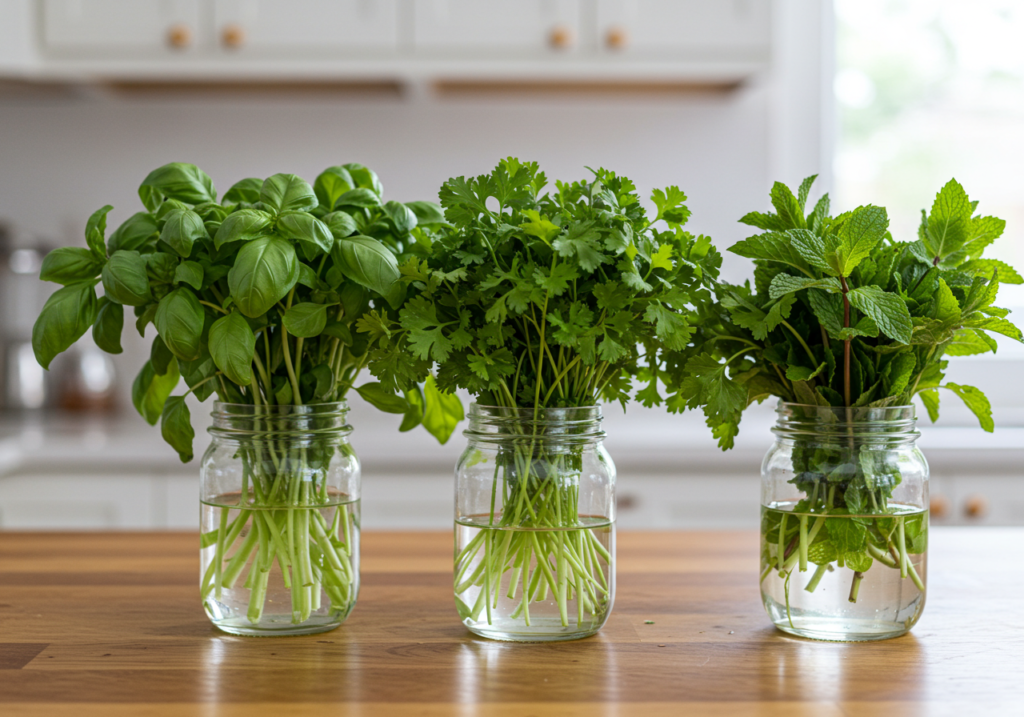
1. Treat Tender Herbs Like Fresh Flowers
Tender herbs—like parsley, cilantro, dill, and mint—thrive when stored just like a bouquet.
- Trim about half an inch off the stems.
- Place them upright in a glass or jar with an inch or two of water.
- Loosely cover the top with a plastic bag to retain humidity.
- Store in the fridge (except basil, which prefers room temperature).
- Change the water every couple of days to keep herbs perky.
👉 Pro Tip: Basil is delicate. Keep it at room temperature in a glass of water (like flowers) because the cold air in the fridge can turn its leaves black.
2. Wrap in Damp Paper Towels
Some herbs do best when wrapped instead of placed in water. This method works great for basil, mint, chives, and tarragon.
- Lightly dampen a paper towel (not soaking wet).
- Wrap the herbs gently inside.
- Place the bundle inside a resealable plastic bag or an airtight container.
- Store in the fridge crisper drawer for best results.
This prevents herbs from drying out while protecting them from excess moisture.
3. Freeze for Long-Term Storage
If you can’t use herbs before they wilt, freezing is a fantastic way to preserve flavor.
- Chop and freeze in ice cube trays:
- Place chopped herbs into trays.
- Cover with olive oil, broth, or water.
- Freeze and store cubes in a zip-top bag.
- Toss directly into soups, stews, or sauces.
- Place chopped herbs into trays.
- Whole-leaf freezing:
- Lay clean, dry herb leaves flat on a tray.
- Freeze, then transfer to a container or freezer bag.
- Great for rosemary, thyme, or sage.
- Lay clean, dry herb leaves flat on a tray.
👉 Pro Tip: Frozen herbs won’t look pretty for garnishes, but they’ll taste just as fresh when cooked.
4. Store Woody Herbs Differently
Herbs like rosemary, sage, and thyme are sturdier and can handle different storage.
- Wrap them loosely in a dry paper towel.
- Place in a resealable bag or container.
- Store in the fridge—they’ll last 2–3 weeks.
These herbs have less moisture in their leaves, so they don’t wilt as quickly.
5. Avoid Common Mistakes
Even the best storage method won’t work if you make these common mistakes:
- Washing too early: Extra water encourages mold. Wash only before using.
- Overcrowding herbs: Packed containers cause bruising and faster spoilage.
- Ignoring airflow: Herbs need some air circulation to prevent sliminess.
- Mixing herbs together: Store each type separately since they have different lifespans.
Quick Reference: Best Storage by Herb
- Parsley, Cilantro, Dill, Mint: In water, like flowers (fridge).
- Basil: In water, at room temperature.
- Chives, Tarragon: Damp paper towel, fridge.
- Rosemary, Thyme, Sage: Dry paper towel, fridge.
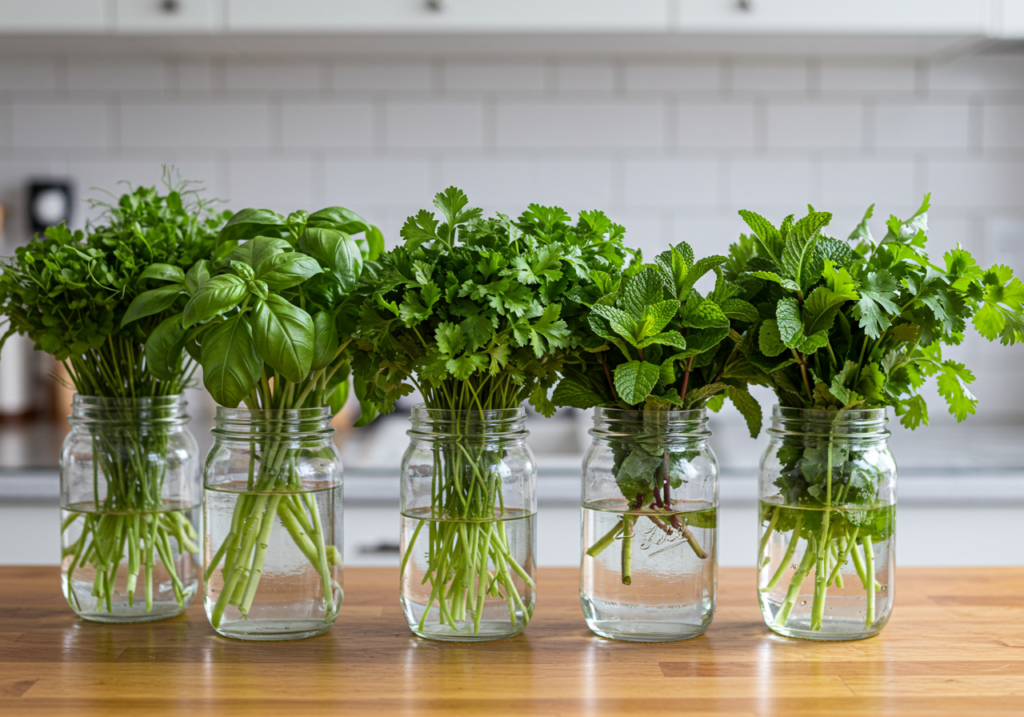
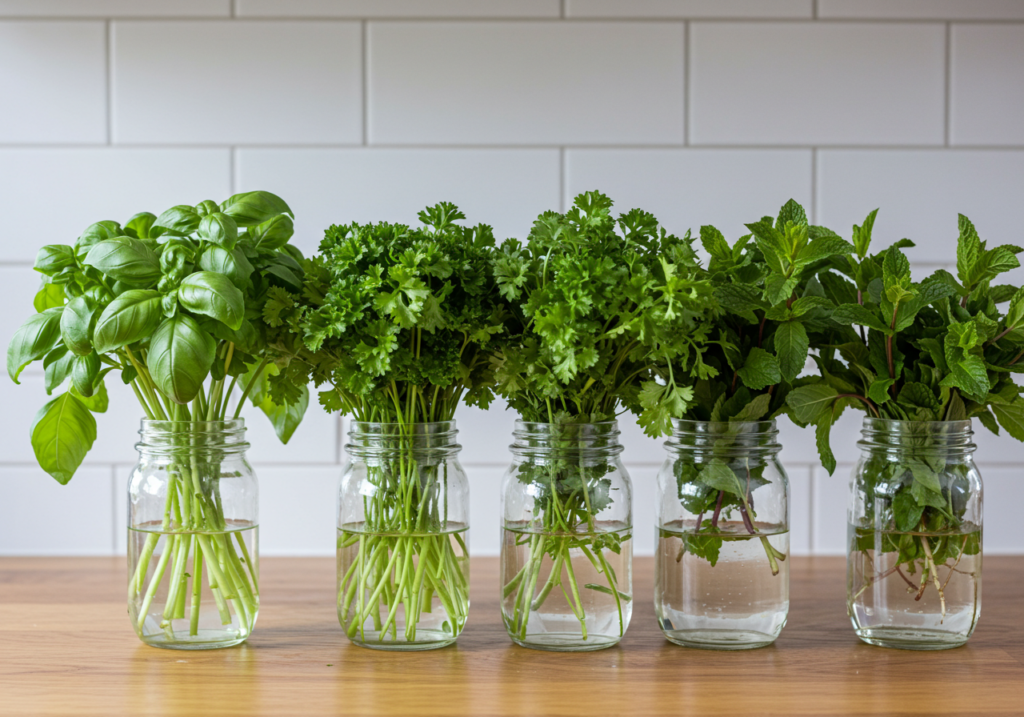
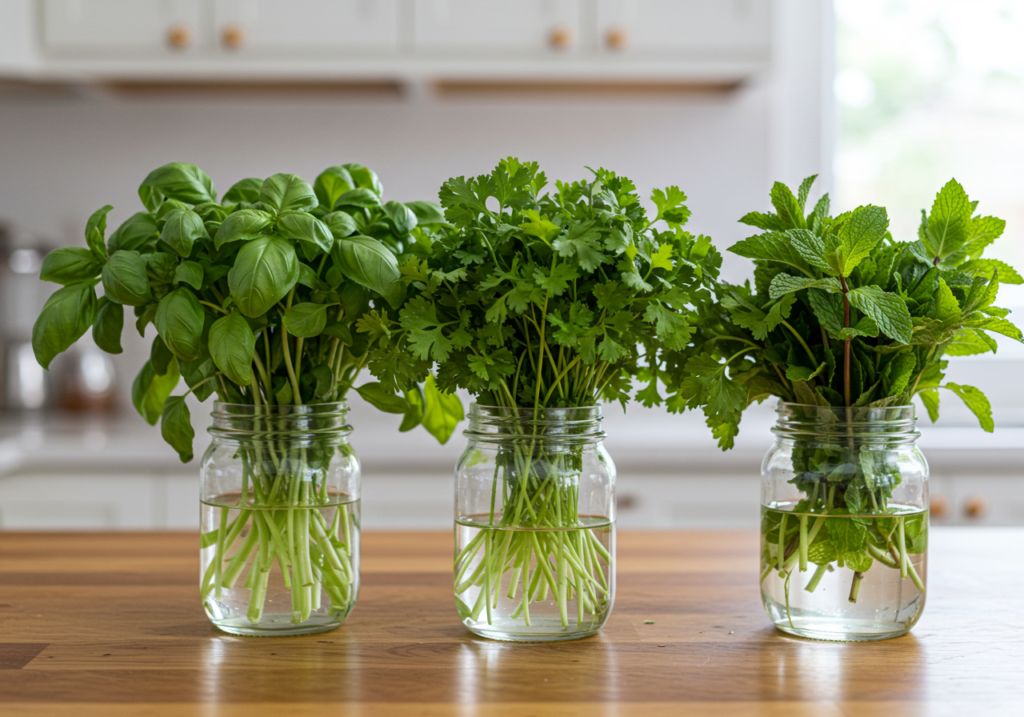
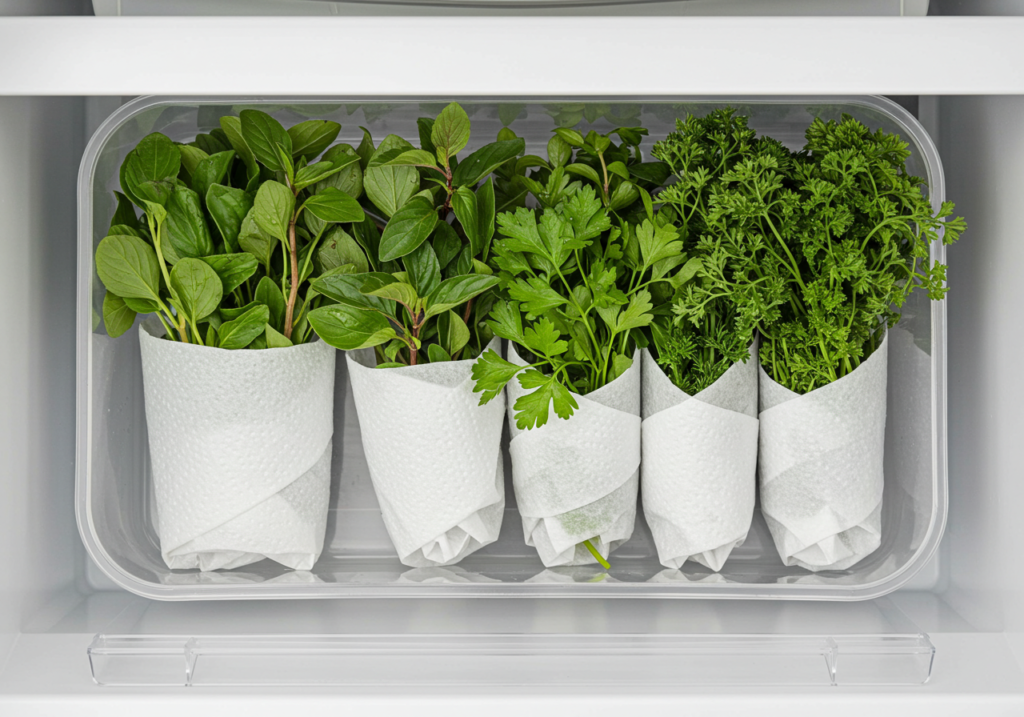
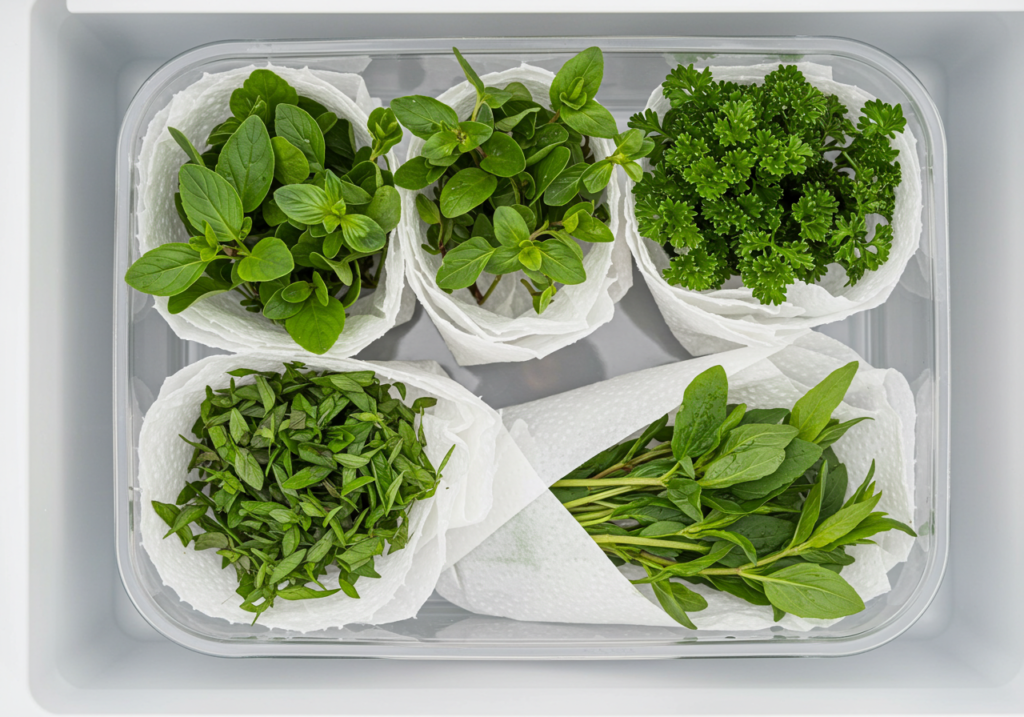

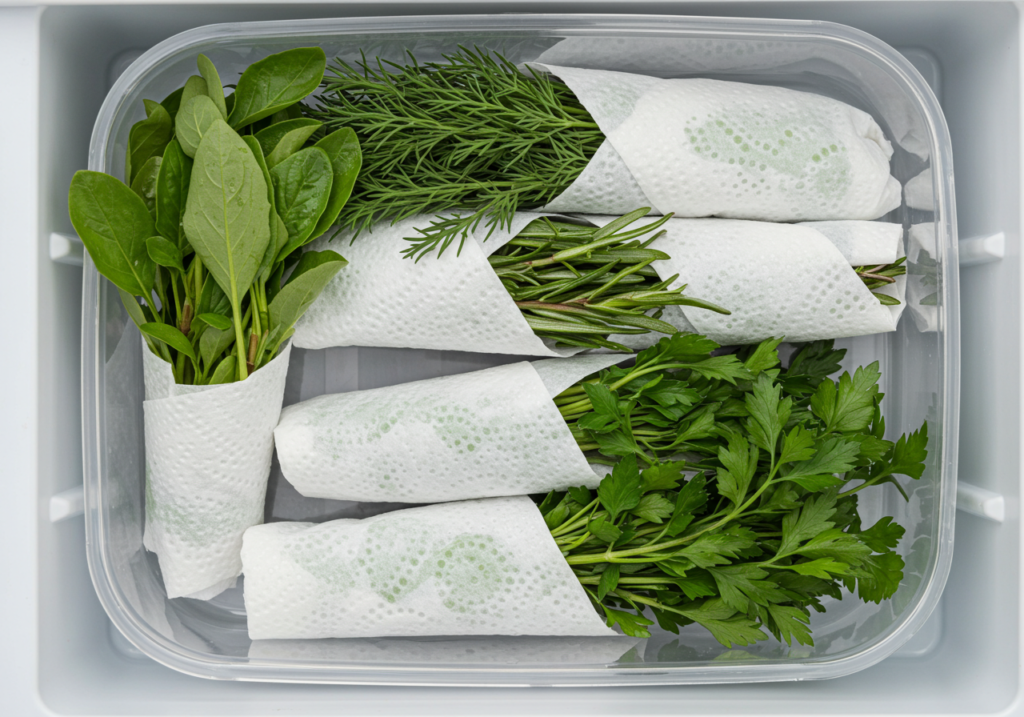
Final Thoughts
Herbs may be delicate, but with just a little care, you can keep them fresh and flavorful much longer. Think of them like living plants—give them the right environment, and they’ll thrive in your kitchen.
By treating tender herbs like flowers, wrapping delicate ones in damp towels, freezing extras, and giving woody herbs proper storage, you’ll always have fresh flavors ready to brighten your meals.
So next time you bring home a bunch of herbs, don’t just toss them into the fridge—store them properly, and you’ll waste less while enjoying garden-fresh taste for weeks.








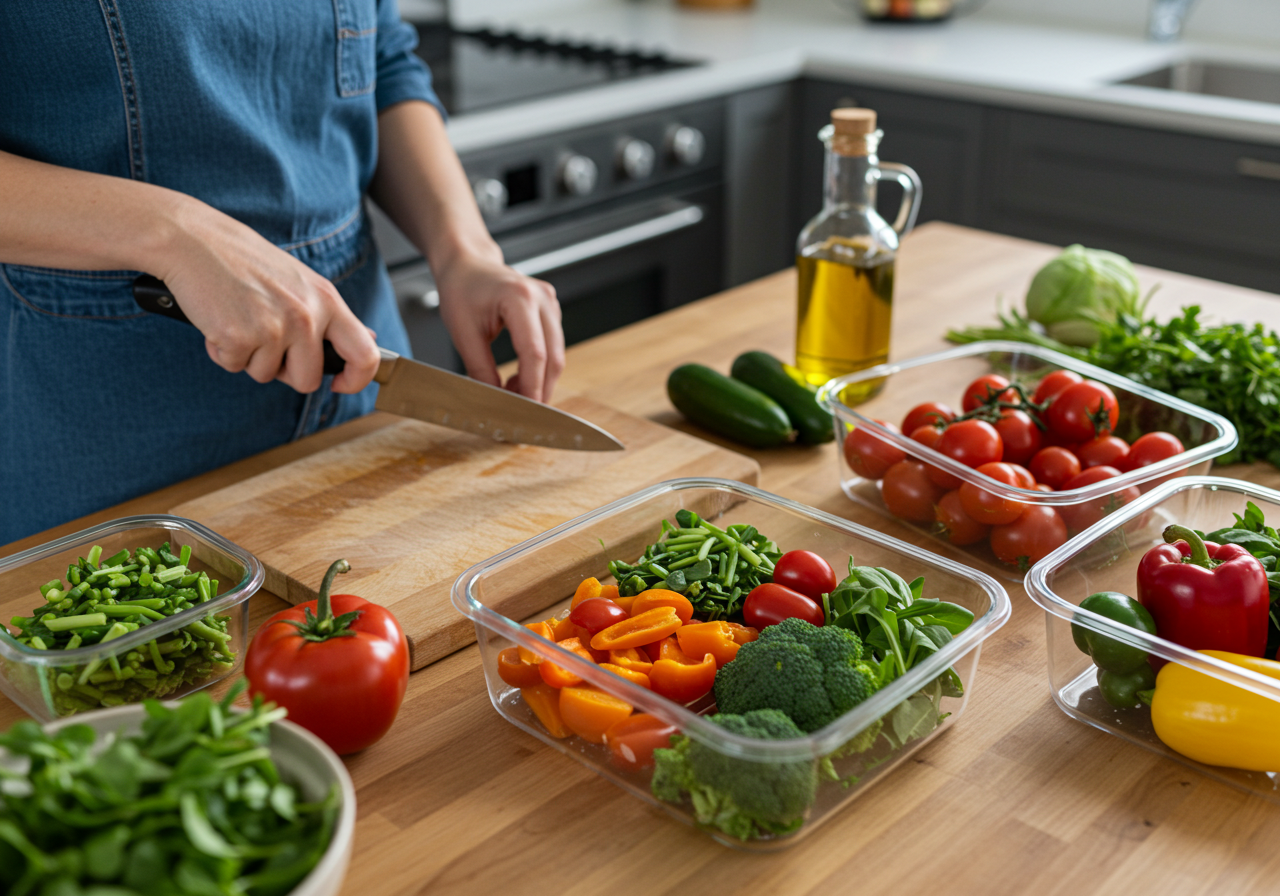

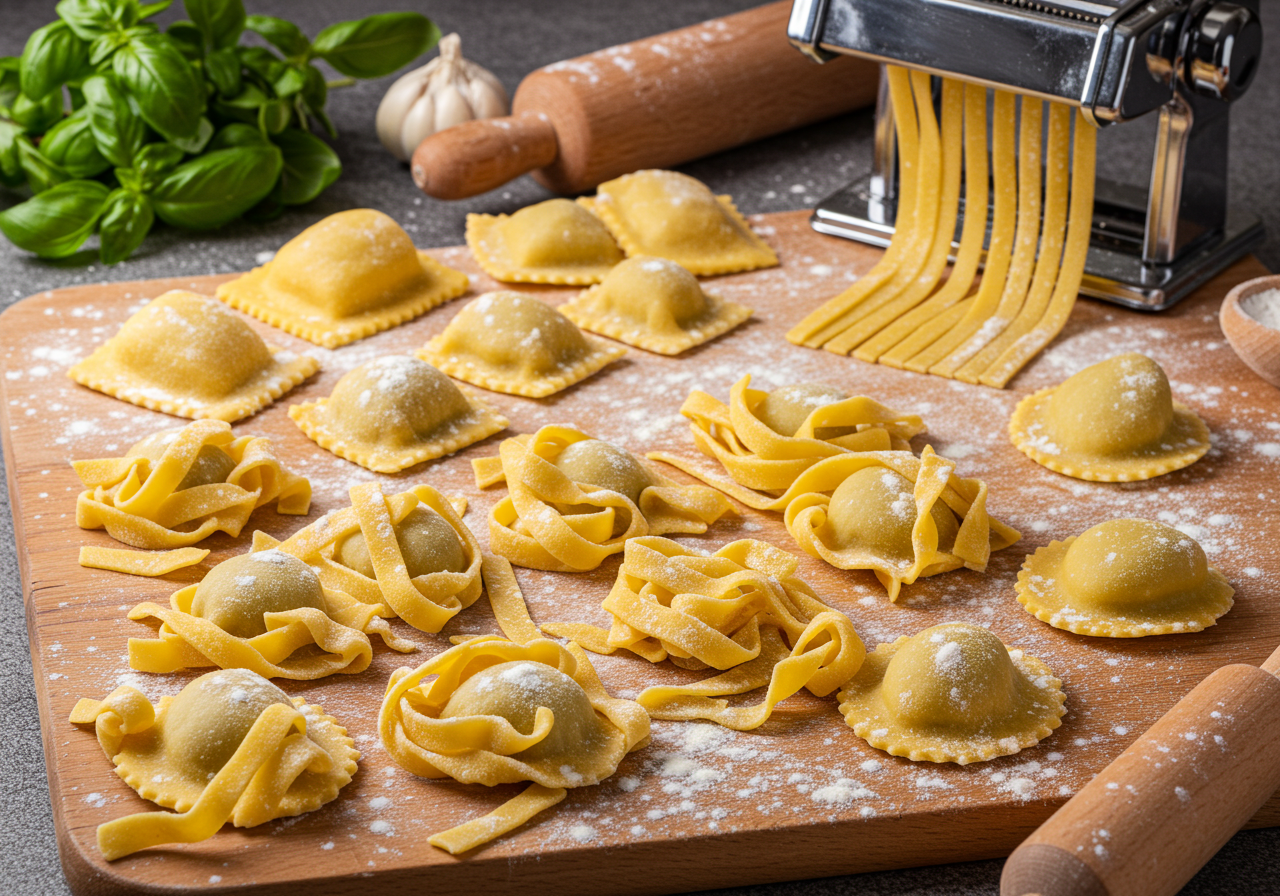
Leave a Reply